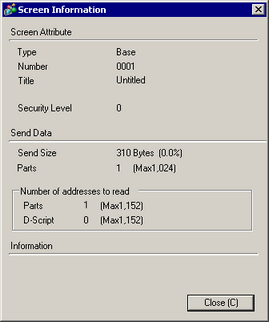
-
Before calculating the communication traffic, first check the constant screen traffic volume on each screen. Performance may deteriorate if the traffic exceeds 475.
The constant screen traffic volume is the total number of addresses set to parts and D-Scripts. In the [Screen (S)] menu, select [Screen Information (I)], and you can view the number of addresses.
Constant screen traffic volume = [Addresses (parts)] + [Addresses (D-script)]
